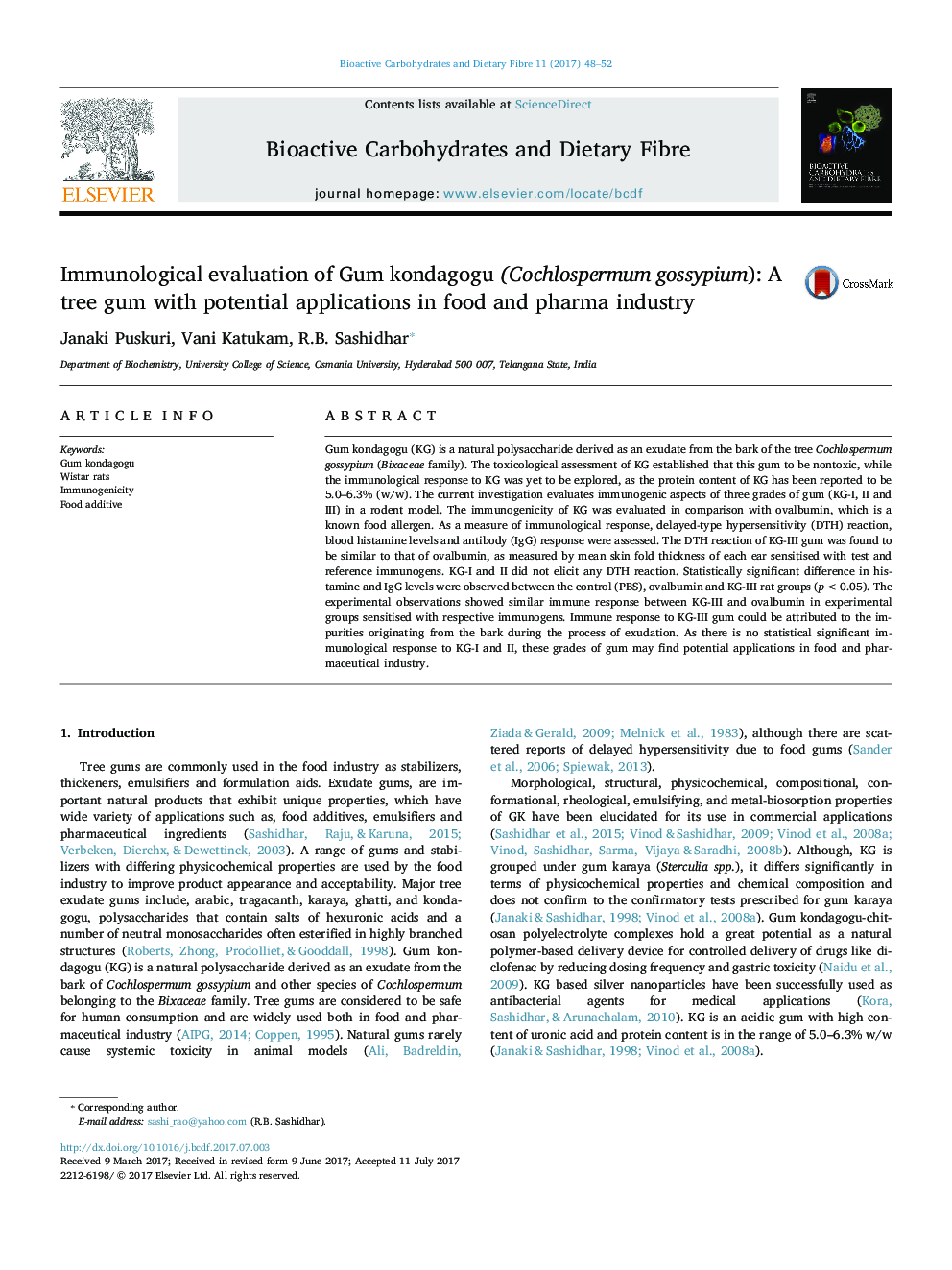| Article ID | Journal | Published Year | Pages | File Type |
|---|---|---|---|---|
| 5431389 | Bioactive Carbohydrates and Dietary Fibre | 2017 | 5 Pages |
â¢Three grades of gum kondagogu (KG-I, KG-II and KG-III) were assessed in a rodent model for their immunological response.â¢KG-III exudate elicited mild delayed type hypersensitivity response (but not KG-I & KG-II) due to presence of contaminants.â¢KG-I and II may find potential applications as an additive in both food and pharmaceutical industry.
Gum kondagogu (KG) is a natural polysaccharide derived as an exudate from the bark of the tree Cochlospermum gossypium (Bixaceae family). The toxicological assessment of KG established that this gum to be nontoxic, while the immunological response to KG was yet to be explored, as the protein content of KG has been reported to be 5.0-6.3% (w/w). The current investigation evaluates immunogenic aspects of three grades of gum (KG-I, II and III) in a rodent model. The immunogenicity of KG was evaluated in comparison with ovalbumin, which is a known food allergen. As a measure of immunological response, delayed-type hypersensitivity (DTH) reaction, blood histamine levels and antibody (IgG) response were assessed. The DTH reaction of KG-III gum was found to be similar to that of ovalbumin, as measured by mean skin fold thickness of each ear sensitised with test and reference immunogens. KG-I and II did not elicit any DTH reaction. Statistically significant difference in histamine and IgG levels were observed between the control (PBS), ovalbumin and KG-III rat groups (p < 0.05). The experimental observations showed similar immune response between KG-III and ovalbumin in experimental groups sensitised with respective immunogens. Immune response to KG-III gum could be attributed to the impurities originating from the bark during the process of exudation. As there is no statistical significant immunological response to KG-I and II, these grades of gum may find potential applications in food and pharmaceutical industry.
Graphical abstractDownload high-res image (401KB)Download full-size image
